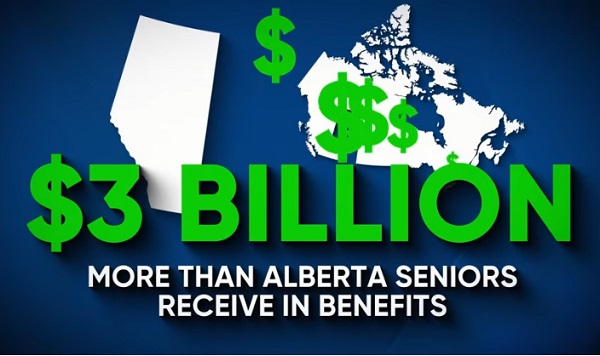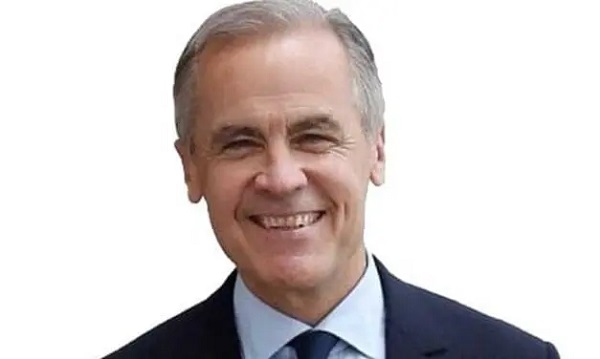Alberta
Planet Of The Humans: A Scathing Exposé On The Sacred Renewables Sector

To celebrate the fiftieth anniversary of Earth Day, the Michael Moore-backed environmental documentary Planet of the Humans was released for free on YouTube.
I’ve been waiting for months to see this film, although I wasn’t overly optimistic that I would get the opportunity because it seemed to have difficulty getting mainstream distribution. A few minutes in and I could understand why – it was damaging to the once-untouchable renewables sector. I’m still in disbelief that the powerful leaders of the climate alarmism movement were not able to stop its release, but that’s the power of the internet. In one day it has over 500,000 views on YouTube.
Even though Moore and Director Jeff Gibbs have reversed their position on renewable sources of energy and call into question the integrity of the climate change movement, the film is in no way pro-fossil fuels. Quite the opposite. They include footage of a Syncrude oil sands mine and periodically mention the “tar sands” with utter disdain. There’s no love for natural gas either.
I’m not opposed to renewables under certain circumstances, but my heart hurt when I saw footage of the destruction caused by mining the base materials for solar panels and wind turbines and the deforestation for biomass. It hurt even more when I saw how easily the projects were discarded after gobbling up millions of dollars of government subsidies, vast tracts of land, and precious natural resources. Because few jurisdictions have strong abandonment regulations, the equipment is often left to rust once it reaches end-of-life in a few short years or is replaced by newer technology.
I learned a lot about the makeup of the renewables sector. I had no idea there were so many biomass power plants in operation in the United States. I also didn’t appreciate what is considered ‘biomass’ or ‘biofuel’. I still can’t clear the image out of my head of the dead animals being pulverized for animal fat-based biofuel.
What I found most confounding was the lack of energy literacy by many of the interviewees, including representatives of green initiatives and leaders of protest movements. There’s one segment where a representative from GM excitedly showcases the release of a new Chevy Volt electric car. When asked for the source of electricity charging it, the women confidently says, “The building” (that the car is plugged into). Pressed further, she admits she doesn’t know, and it’s clear she hasn’t considered, the source. Spoiler alert: it’s about 95% coal. Perhaps this is why there is so much inconsistency and backpedaling by environmental groups.
Although this documentary is grim, and it doesn’t offer any solutions, I give Michael Moore credit for standing behind it because he’s sure to face backlash from people who were once his peers. His courage to put his name behind it and expose another side of the issue will help create better dialogue and stronger public policy.
I encourage everyone to watch it. Seeing the greed of Bill McKibben and the “prophet” Al Gore, it’s time for real environmentalists to lead the environmental movement.
For more stories, visit Todayville Calgary
Agriculture
Lacombe meat processor scores $1.2 million dollar provincial tax credit to help expansion

Alberta’s government continues to attract investment and grow the provincial economy.
The province’s inviting and tax-friendly business environment, and abundant agricultural resources, make it one of North America’s best places to do business. In addition, the Agri-Processing Investment Tax Credit helps attract investment that will further diversify Alberta’s agriculture industry.
Beretta Farms is the most recent company to qualify for the tax credit by expanding its existing facility with the potential to significantly increase production capacity. It invested more than $10.9 million in the project that is expected to increase the plant’s processing capacity from 29,583 to 44,688 head of cattle per year. Eleven new employees were hired after the expansion and the company plans to hire ten more. Through the Agri-Processing Investment Tax Credit, Alberta’s government has issued Beretta Farms a tax credit of $1,228,735.
“The Agri-Processing Investment Tax Credit is building on Alberta’s existing competitive advantages for agri-food companies and the primary producers that supply them. This facility expansion will allow Beretta Farms to increase production capacity, which means more Alberta beef across the country, and around the world.”
“This expansion by Beretta Farms is great news for Lacombe and central Alberta. It not only supports local job creation and economic growth but also strengthens Alberta’s global reputation for producing high-quality meat products. I’m proud to see our government supporting agricultural innovation and investment right here in our community.”
The tax credit provides a 12 per cent non-refundable, non-transferable tax credit when businesses invest $10 million or more in a project to build or expand a value-added agri-processing facility in Alberta. The program is open to any food manufacturers and bio processors that add value to commodities like grains or meat or turn agricultural byproducts into new consumer or industrial goods.
Beretta Farms’ facility in Lacombe is a federally registered, European Union-approved harvesting and meat processing facility specializing in the slaughter, processing, packaging and distribution of Canadian and United States cattle and bison meat products to 87 countries worldwide.
“Our recent plant expansion project at our facility in Lacombe has allowed us to increase our processing capacities and add more job opportunities in the central Alberta area. With the support and recognition from the Government of Alberta’s tax credit program, we feel we are in a better position to continue our success and have the confidence to grow our meat brands into the future.”
Alberta’s agri-processing sector is the second-largest manufacturing industry in the province and meat processing plays an important role in the sector, generating millions in annual economic impact and creating thousands of jobs. Alberta continues to be an attractive place for agricultural investment due to its agricultural resources, one of the lowest tax rates in North America, a business-friendly environment and a robust transportation network to connect with international markets.
Quick facts
- Since 2023, there are 16 applicants to the Agri-Processing Investment Tax Credit for projects worth about $1.6 billion total in new investment in Alberta’s agri-processing sector.
- To date, 13 projects have received conditional approval under the program.
- Each applicant must submit progress reports, then apply for a tax credit certificate when the project is complete.
- Beretta Farms has expanded the Lacombe facility by 10,000 square feet to include new warehousing, cooler space and an office building.
- This project has the potential to increase production capacity by 50 per cent, thereby facilitating entry into more European markets.
Related information
Alberta
Alberta Next: Alberta Pension Plan

From Premier Danielle Smith and Alberta.ca/Next
Let’s talk about an Alberta Pension Plan for a minute.
With our young Alberta workforce paying billions more into the CPP each year than our seniors get back in benefits, it’s time to ask whether we stay with the status quo or create our own Alberta Pension Plan that would guarantee as good or better benefits for seniors and lower premiums for workers.
I want to hear your perspective on this idea and please check out the video. Get the facts. Join the conversation.
Visit Alberta.ca/next
-

 Agriculture2 days ago
Agriculture2 days agoCanada’s supply management system is failing consumers
-

 Economy2 days ago
Economy2 days agoTrump opens door to Iranian oil exports
-

 Alberta1 day ago
Alberta1 day agoCOVID mandates protester in Canada released on bail after over 2 years in jail
-

 Business1 day ago
Business1 day agoCanada’s loyalty to globalism is bleeding our economy dry
-

 Business1 day ago
Business1 day agoCarney’s spending makes Trudeau look like a cheapskate
-

 armed forces23 hours ago
armed forces23 hours agoCanada’s Military Can’t Be Fixed With Cash Alone
-

 Crime1 day ago
Crime1 day agoProject Sleeping Giant: Inside the Chinese Mercantile Machine Linking Beijing’s Underground Banks and the Sinaloa Cartel
-

 Alberta1 day ago
Alberta1 day agoAlberta uncorks new rules for liquor and cannabis







